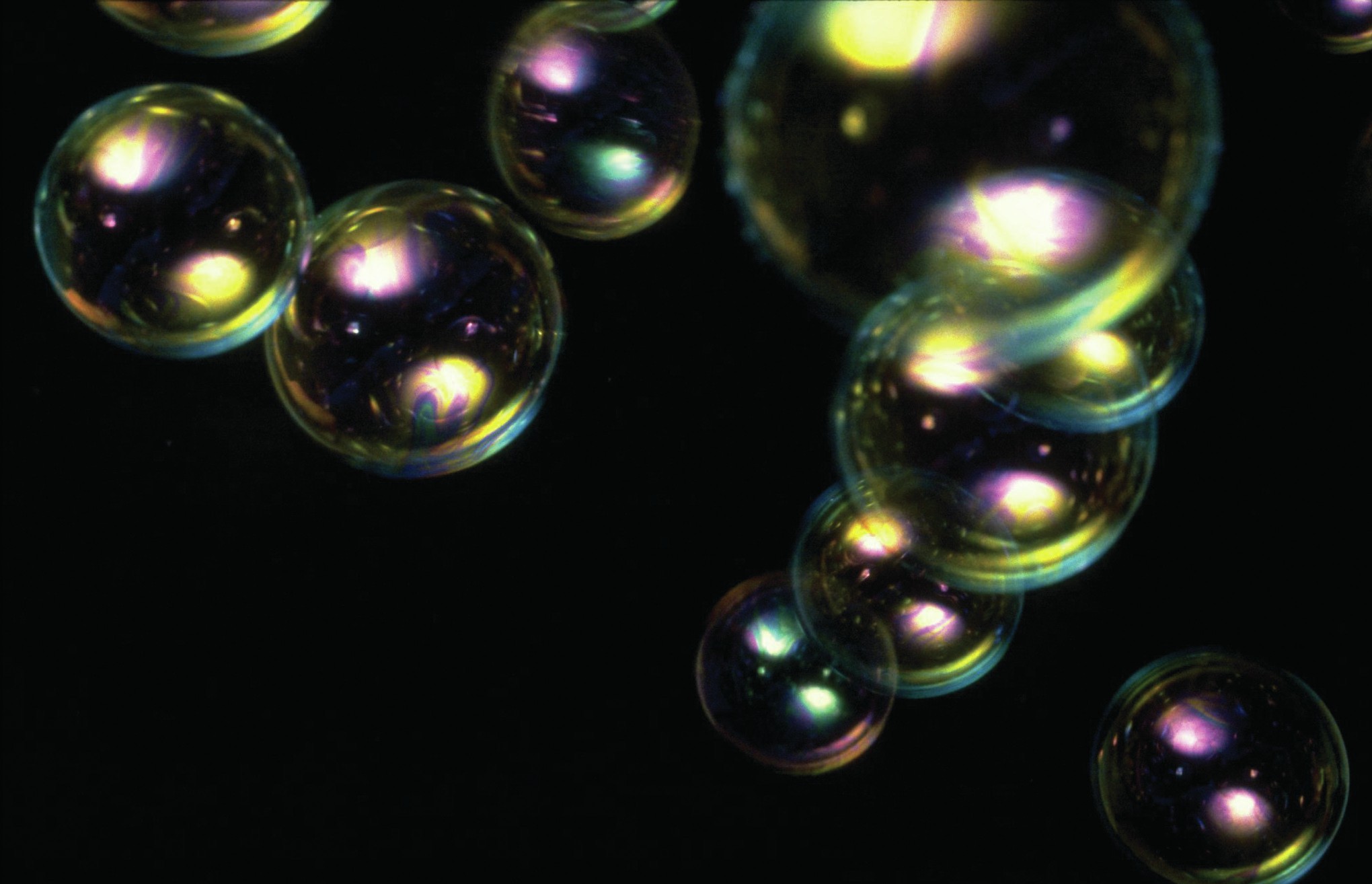
Bubbles (Figure 1) are lovely objects and illustrate many physical phenomena, such as thin film interference effects (see, for example, Picture page, PHYSICS REVIEW Vol. 16, No. 4). Bubbles minimise energy by making their surface area as small as possible. (Producing or extending a surface always requires energy: see 8 Across ‘Crack’.) Where possible, bubbles form spheres because a sphere has the smallest surface area for a given volume. On Earth, only small bubbles come close to a true sphere; larger ones are distorted by their own weight.
The pressure inside a bubble must be at a higher pressure than the air outside as the surface film is trying to go to zero area and acts like a sheet of rubber (as in a balloon) and compresses the gas within. Equilibrium is reached when any reduction of size/area, and hence energy, would mean that work would have to be done, compressing the gas even more. It also turns out that the excess pressure inside the bubble is proportional to 1/r; the larger the bubble, the smaller the excess pressure. This is why small bubbles can have such devastating effects in processes such as cavitation (see PHYSICS REVIEW Vol. 18, No. 2, pages 29–30).
Your organisation does not have access to this article.
Sign up today to give your students the edge they need to achieve their best grades with subject expertise
Subscribe




